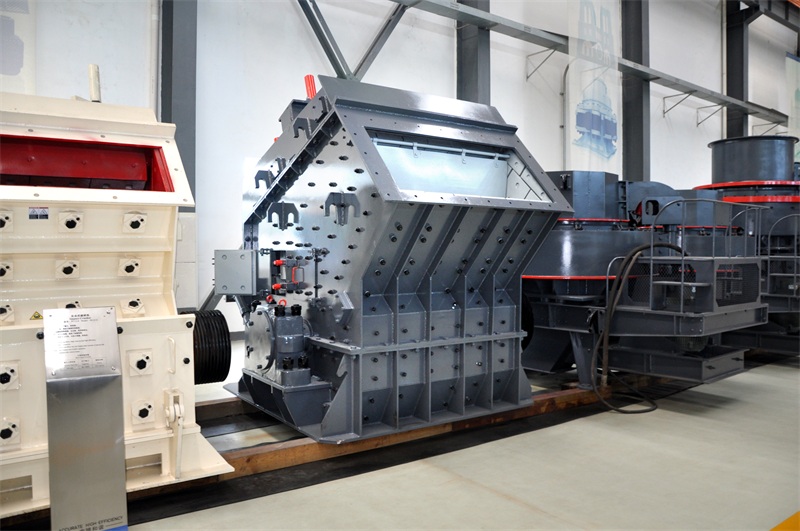
In the years of working in the mining and construction industries, I've noticed that many buyers often overlook the crucial role of crushing chamber design when purchasing jaw crushers. The design of the crushing chamber can significantly impact the efficiency, capacity, and energy consumption of the equipment. This article will delve into the influence mechanism of the geometric parameters of the crushing chamber on the crushing effect, and provide practical insights for optimizing the performance of jaw crushers.
The geometric parameters of the crushing chamber, such as the chamber shape, angle, and length, play a vital role in determining the crushing effect. For instance, the nip angle affects the biting ability of the crusher. A smaller nip angle allows the crusher to grip the material more effectively, reducing the likelihood of material slippage. In a study, it was found that reducing the nip angle from 22° to 20° can increase the crushing efficiency by about 15%. The chamber length also influences the residence time of the material in the chamber, which in turn affects the crushing ratio. A longer chamber generally results in a higher crushing ratio but may also increase the energy consumption.

Traditional chamber shapes, like the straight - walled chamber, have some inherent drawbacks. They often lead to uneven material distribution, causing over - crushing in some areas and under - crushing in others. This not only reduces the overall crushing efficiency but also increases the wear on the crushing components. On the other hand, the modern 'V' - shaped crushing chamber design offers several advantages. It provides a more uniform material flow path, ensuring that the material is evenly crushed throughout the chamber. The 'V' - shape also allows for a larger feed opening at the top, which can accommodate larger pieces of material, and a smaller discharge opening at the bottom, increasing the crushing ratio. For example, the Zhengzhou Kuanglian PEW jaw crusher adopts an innovative V - shaped chamber design. It has been stably operating in over 300 projects globally, achieving a 20% increase in crushing efficiency compared to traditional models.
When it comes to different ore hardness and particle size conditions, the choice of the crushing chamber is crucial. For hard and large - sized ores, a chamber with a larger nip angle and a shorter length may be more suitable. This is because a larger nip angle can provide greater crushing force, and a shorter length can prevent the material from getting stuck in the chamber. In contrast, for soft and fine - sized ores, a chamber with a smaller nip angle and a longer length can be used to achieve a higher crushing ratio. In a gold mining project, using a suitable chamber design for the local ore hardness and particle size increased the production capacity by 25%.
In the field of construction waste recycling, the optimized 'V' - shaped chamber design of the jaw crusher can effectively crush various construction waste materials, such as concrete blocks and bricks. This not only reduces the volume of waste but also enables the recycled materials to be reused in new construction projects. In the railway transportation industry, where high - quality aggregates are required, the 'V' - shaped chamber can produce aggregates with better particle shape and higher strength, meeting the strict requirements of railway engineering. For example, in a railway ballast production project, the use of a jaw crusher with a 'V' - shaped chamber reduced the production cost by 18% while improving the product quality.

During the operation of the jaw crusher, some common problems may occur, such as over - crushing, under - crushing, and blockage. Over - crushing can be caused by an improper chamber shape or excessive crushing force. To solve this problem, adjusting the chamber parameters or reducing the feed rate can be effective solutions. Under - crushing may result from a too - large discharge opening or insufficient crushing force. Increasing the crushing force or reducing the discharge opening size can improve the situation. Blockage often happens when the material is too large or the chamber is over - loaded. Regularly inspecting the feed material size and avoiding over - feeding can prevent blockage. Have you ever encountered problems like over - crushing or blockage in your crusher operation?
From a research and development perspective, the continuous innovation of the crushing chamber design is to better meet the needs of users. As one R & D expert said, "Our goal is to design a crushing chamber that can maximize the efficiency while minimizing the energy consumption and maintenance cost." By integrating advanced technologies and user feedback, manufacturers can develop more efficient and reliable jaw crushers. For example, through continuous R & D, the new generation of jaw crushers can adapt to a wider range of materials and working conditions, providing users with more value - added solutions.

In conclusion, optimizing the design of the crushing chamber is the key to improving the efficiency of jaw crushers. Whether you are in the mining, construction waste recycling, or railway transportation industry, understanding these principles can help you make better decisions when purchasing and operating jaw crushers. Do you have similar problems in your industry? You can tell me the specific scenario, and I'll send you 3 solution cases from the same industry. Click here to learn more about our advanced jaw crushers.



.jpg?x-oss-process=image/resize,h_800,m_lfit/format,webp)

.jpg?x-oss-process=image/resize,h_800,m_lfit/format,webp)



